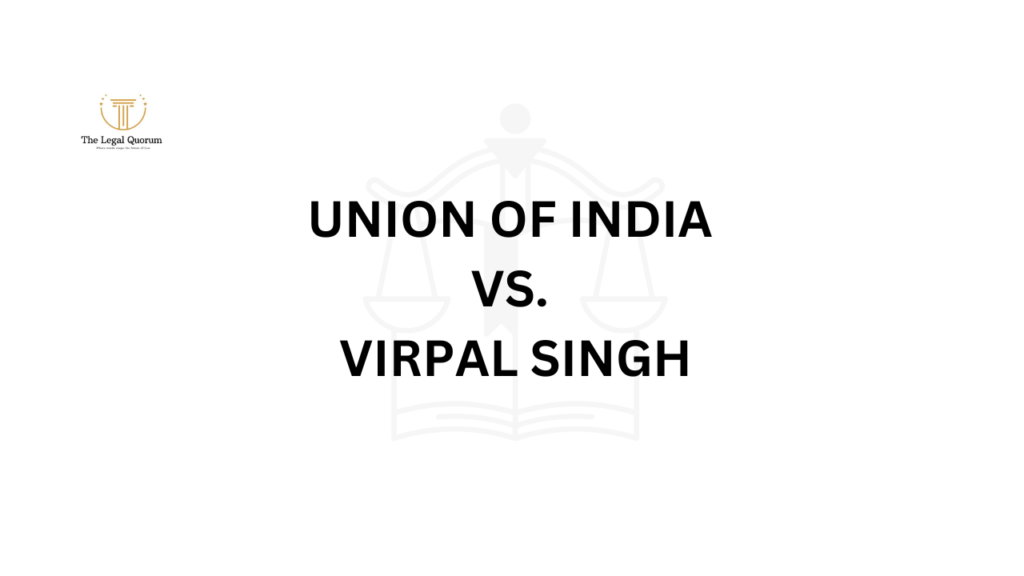Published On: 23rd June 2025
Authored By: Divyansh Mishra
College: University of Lucknow
ABSTRACT
Contracts of indemnity play a crucial role in risk management by ensuring that one party (the indemnity holder) is protected from specific losses arising due to the actions of the indemnifier or another person. As stipulated under Section 124 of the Indian Contract Act, 1872, such contracts aim to provide financial security. This article emphasizes the statutory rights provided to indemnity holders under Section 125 of the Act.
The indemnity holder has the right to recover all damages they are legally obliged to pay in suits that fall within the scope of indemnity. This protection extends to include all reasonable legal costs incurred while initiating or defending such suits, as long as the indemnity holder acts prudently or with the consent of the indemnifier. Additionally, the indemnity holder can recover amounts paid in a fair and prudent compromise or settlement of these suits.[1]
These rights – concerning damages, costs, and settlements – are essential to ensure financial protection and clarify the indemnifier’s liability. A clear understanding and proper enforcement of these rights are vital for indemnity agreements to function as dependable instruments for managing financial risk arising from human conduct, under Indian law.
INTRODUCTION
Indemnity is a legal concept that arises from a contract, or is embedded within clauses of commercial agreements, where one party promises to compensate the other for losses incurred due to the actions of the promisor or a third party. It becomes relevant when the indemnified individual is sued by a third party, making it useful for covering legal expenses. Thus, it is a contingent contract, enforceable upon the occurrence of losses.
For instance: “A agrees to compensate B for the consequences of any legal action taken by C against B regarding a specified sum of money. This agreement qualifies as a contract of indemnity.”
What is “Indemnity”
The foundation of the indemnity concept can be traced to the 1827 case of Adamson v. Jarvis. In that case, Jarvis, the principal, misrepresented ownership of goods to an auctioneer, Adamson, who sold them believing Jarvis had lawful ownership. When the rightful owner sued Adamson for conversion, the court ruled that Adamson could recover the damages and costs from Jarvis.
In India, contracts of indemnity are governed by Section 124 of the Indian Contract Act, 1872, which defines it as: “A contract by which one party promises to save the other from loss caused to him by the conduct of the promisor himself or by the conduct of any other person.” This broad and flexible interpretation includes any express or implied promise to protect from loss.
The loss must arise due to a human agency’s conduct. Losses caused by natural calamities or unforeseen events (such as Acts of God) are excluded. Therefore, the indemnity holder, as the protected party, is vested with specific legal rights.
Under English law, indemnity is defined more broadly as a “promise to save a person harmless from the consequences of an act.” It includes losses from events beyond human control, such as fire or natural disasters. Additionally, insurance contracts (excluding life insurance) are considered contracts of indemnity.
Rights of Indemnity Holder
An indemnity holder can compel the promisor for specific performance if the liability incurred is absolute and falls within the scope of the indemnity agreement.
Section 125 of the Indian Contract Act, 1872 specifies three primary rights of an indemnity holder when faced with a legal suit. The promisee is entitled to recover from the promisor:
- All damages they may be legally compelled to pay in a suit covered by the indemnity agreement.
- All costs incurred in such suits, provided the indemnity holder acts prudently or with authorization and does not defy the promisor’s instructions.
- All sums paid in compromise or settlement of such suits, if done in good faith, with prudence, or with the promisor’s approval.[2]
Damages
The indemnity holder has a right to claim damages they are compelled to pay as a result of a legal proceeding. The indemnifier is then obligated to pay these damages, provided they were agreed upon in good faith. Any damages paid by the indemnity holder to third parties or the indemnifier themselves can be recovered.
In Parker v. Lewis (1873)[3], the court affirmed that if an indemnity agreement exists and a legal action arises, the indemnity holder may notify the indemnifier to defend the action. If the indemnifier refuses, the indemnity holder can settle the case reasonably and claim the amount under the indemnity contract. The court maintained that the indemnifier remains liable even if the case proceeds to appeal.
In Nallappa Reddi v. Vridhachala Reddi (1914)[4], it was established that the indemnifier cannot escape liability by raising objections once a valid indemnity agreement exists.
Costs
An indemnity holder may recover legal costs incurred while defending a lawsuit, provided their actions were prudent, authorized, or not against the indemnifier’s instructions.
In Alla Venkataramanna v. Palacherela Manqamma (1944)[5], the court recognized the indemnifier’s liability for legal costs, even if they were not directly party to the contract.
In Pepin v. Chunder Seekur Mookerjee (1880)[6], the court ruled that reasonable legal costs incurred in resisting, reducing, or ascertaining a claim are recoverable from the indemnifier.
Case Insight: Pepin, the original lessee, assigned the lease to others who failed to uphold lease covenants. As a result, Pepin was sued and paid damages. He successfully claimed indemnity from the assignees for both the compensation and legal costs incurred. The judgment, supported by Moule v. Garrett (1872)[7], established that an implied indemnity obligation arises when a lessee assigns a lease, and the assignees fail to perform their duties.
Sums
Amounts paid in settlement or compromise can be recovered by the indemnity holder, provided the settlement is made in good faith, is reasonable, and not immoral or against the indemnifier’s instructions.
In Anwar Khan v. Gulam Kasam, the court held that the indemnifier is only liable to the extent of actual indemnification and may refuse amounts beyond that.
In Gopal Singh v. Bhawani Prasad (1888)[8], the court addressed whether a party providing a guarantee could seek indemnification. Shiban Lal guaranteed payment of rent and secured a promise from Ganga Bakhsh to indemnify him in case of default by the lessee. When default occurred, Shiban Lal paid the rent and was entitled to recover the same from Bakhsh’s representative.
The court clarified that this was an indemnity contract and not merely a guarantee, as the promise was made to the surety and not the creditor. Thus, indemnity rights include the ability to recover both principal losses and litigation costs.
Duties of Indemnity Holder
With rights come corresponding duties. The indemnity holder must:
- Act prudently: They must act reasonably and responsibly. Negligent behavior absolves the indemnifier of liability.
- Avoid intentional harm: They must act in good faith and not seek to deceive or cause losses to the indemnifier.
- Follow the promisor’s instructions: If the indemnity holder disobeys instructions, losses arising from such acts will not be covered by the indemnifier.
When can an indemnifier be made liable?
Indian High Courts have expressed differing views on whether indemnity can be enforced before actual loss is suffered. The High Courts of Nagpur and Lahore require actual loss. However, the Bombay, Calcutta, Patna, Madras, and
Allahabad High Courts follow English equitable principles, allowing indemnity even before loss occurs. This approach ensures the indemnified party has adequate resources to handle legal proceedings.
What is the Limitation Period to enforce the Rights of Indemnity Holder in India?
Typically, the limitation period to enforce indemnity rights is six years from the date of the contract breach. However, contract-specific terms can modify this period. It may also begin from the date of non-compliance or dishonor of the indemnity agreement.
Conclusion
In conclusion, a contract of indemnity serves as an essential safeguard against potential losses. The indemnity holder need not establish causation or proximity to default; the mere occurrence of loss within the indemnity’s scope is sufficient to claim compensation. These provisions enable the indemnified party to remain unaffected by adverse events.
Although the statutory rights of the indemnity holder are specified, they leave room for broader interpretation to achieve equity and justice. The Law Commission, in its 13th Report (1958), recommended expanding these rights and providing remedies even when legal action hasn’t been initiated. Strengthening the legal framework around indemnity can further ensure fairness and reduce the financial burdens faced due to lawsuits and third-party conduct.
REFERENCES
- Avtar Singh, Law of Contract and Specific Relief (Rajesh Kapoor, 13th edn, 2022)
- The Indian Contract Act, 1872
- Case Laws from Indian Kanoon (www.indiankanoon.org)
- LawBhoomi: “Contract of Indemnity” (accessed April 2025)
- iPleaders Blog: “Rights of an Indemnity Holder” (accessed April 2025)
[1] LawBhoomi, ‘Contract of Indemnity’ (LawBhoomi, 21 December 2024) <https://lawbhoomi.com/contractofindemnity-meaning-concept-and-nature/> accessed 2 April 2025.
[2] ‘Rights of an Indemnity Holder’ (iPleaders, 16 September 2022) <https://blog.ipleaders.in/rights-of-anindemnity- holder/> accessed 6 April 2025.
[3] Parker vs. Lewis (1873) LR 8 Ch App 1035
[4] Nallappa Reddi v. Vridhachala Reddi ILR (1914) 37 Mad 270
[5] Alla Venkataramanna vs. Palacherela Manqamma AIR 1944 MAD 457.
[6] Pepin vs. Chunder Seekur Mookerjee ILR (1880) 5 Cal 811
[7] Moule v. Garrett (1872) LR 7 EXCH 101
[8] Gopal Singh v. Bhawani Prasa ILR (1888-90) 10 All 531




